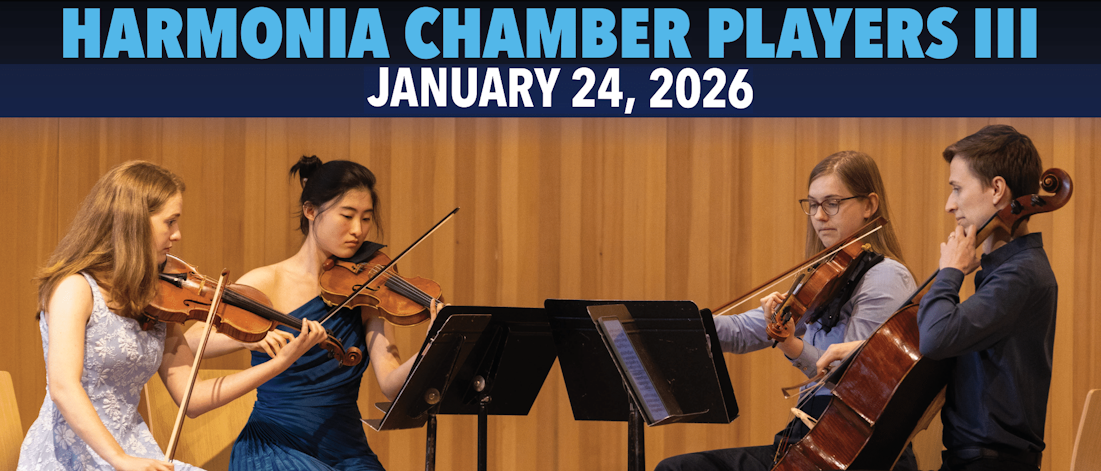chamber music

Saturday, January 24, 2026 • 2:00 p.m.
First Free Methodist Church (3200 3rd Ave W)
William White, conductor
Hsing-Hui Hsu, conductor
Program
Antonín Dvořák (1887–1979)
Serenade for Wind Instruments in D minor, Op. 44
Sheila Bristow (*1969)
new work for string orchestra [world premiere]
Franz Joseph Haydn (1732–1809)
Symphony No. 52 in C minor
About the Concert
The Harmonia Chamber Players expand into the Harmonia Chamber Orchestra for this intimate performance of extravagant masterpieces.
Program Notes
Antonín Dvořák
Serenade in D Minor, Op. 44
Dvořák modeled both of his serenades — the Op. 22 for strings and this Op. 44 — after the Classical-era serenades and divertimenti of Mozart and Haydn, works for chamber ensembles or small orchestras consisting of dance movements yet sometimes with aspirations toward a symphonic scale. In particular, the instrumentation of Dvořák’s Op. 44 recalls the harmonie ensemble so prevalent in the previous century: pairs of oboes, clarinets, horns and bassoons, often with an ad libitum part for string bass or contrabassoon — Dvořák uses both, along with an extra horn and a single cello. As with his string serenade, Dvořák worked quickly, sketching and orchestrating the opening movement in a single day (January 4, 1878) and completing the other three within two weeks. The premiere did not take place until November 17 of that year, in Prague. During the interim, Dvořák wrote his Slavonic Dances, whose publication in late November would create a sensation across Europe, turning a rather obscure Czech composer into a household name. Although Dvořák originally planned to write three serenades, he ended up using sketches for a third such composition in his Czech Suite, composed the following year.
The Op. 44 serenade opens with its shortest movement, a march. While Dvořák labels the next movement a minuet (in F major) with a trio (in B♭), the forms in question are actually two triple-meter Bohemian folk dances: the sousedská (in moderate tempo) and furiant (very fast, with syncopated cross-rhythms). The key moves to A major for the slow movement that follows, returning to D minor for the finale. Cast in a modified rondo form, this last movement charges ahead until relaxing for a meno mosso section that builds forcefully in anticipation of a recapitulation — but it is the march theme from the first movement that reappears before the opening theme of the rondo returns, now in D major.
— Jeff Eldridge
